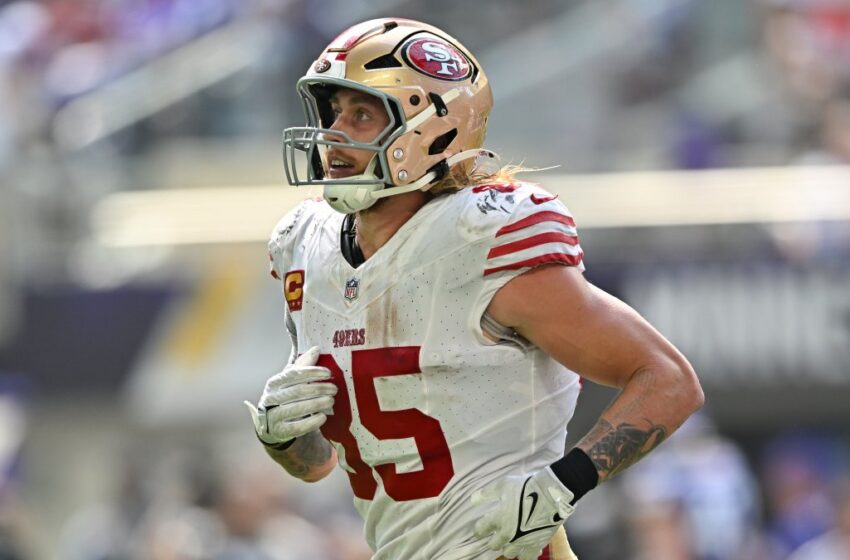George Kittle: Severity and impact of his injury on the 49ers?

George Kittle exits Week 1 with hamstring injury. Image Credit: Alika Jenner/Getty Images
San Francisco 49ers tight end George Kittle exited during Week 1’s dominant win over the Seahawks after sustaining a hamstring injury. The 49ers, who won the matchup convincingly, now face uncertainty surrounding one of their most dynamic offensive weapons.
George Kittle had several key contributions before the injury, showcasing his usual physicality and versatility. However, as the game progressed, he appeared to favor his leg, prompting a substitution and preliminary medical evaluation. While initial team comments labeled it a “minor” injury, confirmation will come after testing and rest.
49ers Celebrate Win but Face Mounting Injuries
The 49ers entered Week 1 confident despite offseason roster turnover, but the game at Lumen Field quickly turned into a test of depth. Several of their biggest stars ended up in the medical tent before halftime. Fred Warner was kicked in the face, Trent Williams tweaked his ankle, and Kittle left with his hamstring issue. Later in the fourth quarter, receiver Jauan Jennings exited with a shoulder injury.
While Warner and Williams managed to return, Jennings and Kittle did not. Head coach Kyle Shanahan confirmed both players will undergo MRIs to evaluate the severity of their injuries. Kittle, who caught a touchdown on the opening drive, was ruled out for the remainder of the game, casting immediate doubt on his status for next week’s matchup in New Orleans. With only three tight ends currently on the active roster, San Francisco may be forced to elevate Brayden Willis if Kittle’s recovery extends beyond one game.
READ ALSO
What’s next for Russell Wilson after struggling Giants debut?
Xavier Worthy injury update: What’s next for the Chiefs rookie?
Christian McCaffrey injury update: Should 49ers fans be worried?
Assessing the Severity: Recovery Timeline and Prognosis
Hamstring injuries are notoriously unpredictable, varying widely in recovery time. Short strains may heal within 2–3 weeks, while more severe tears can sideline players for a month or longer. Coach Kyle Shanahan maintained optimism postgame, emphasizing cautious handling.
If Kittle’s injury falls on the milder end, he could return midseason. But if scans reveal structural damage, the 49ers may need to plan without him for at least 4–6 weeks. That would create a significant void in their offense, especially considering his role as a blocker, receiver, and leader.
Impact on the 49ers’ Offensive Game Plan
Kittle is more than a skill-player; he’s a core component of San Francisco’s offensive identity. His ability to threaten downfield, catch in traffic, and open lanes for running backs makes him invaluable to schemes centered on misdirection, play-action, and red-zone execution.
In Kittle’s absence, the 49ers may lean more on wide receivers and shifting tight ends such as Luke Farrell or Jake Tonges. The offensive scheme could pivot toward quicker passing and heavier reliance on Christian McCaffrey’s versatility until their star tight end is cleared to return.
What’s Next for Kittle, and the Team?
Next steps include comprehensive imaging (MRI) to determine the injury grade. Depending on severity, San Francisco must adjust training loads and potentially elevate backups. Given Kittle’s leadership in the locker room, his presence, even if on the sideline, remains crucial during this early playoff push.
Press reports suggest the team will measure his progress week by week, aiming for a return before the midseason stretch. A fully healthy George Kittle, even after an early setback, remains a dangerous weapon for opposing defenses.


